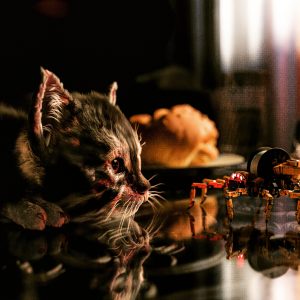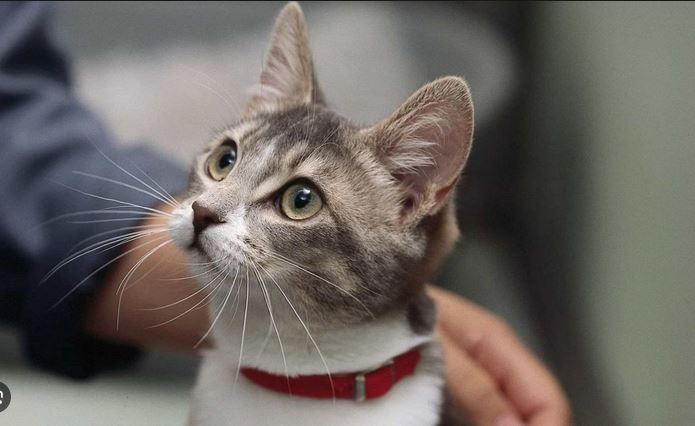In the age of the internet, shocking and disturbing videos often make their way onto social media platforms, leaving viewers in disbelief and sparking heated debates. One such video that has circulated in recent times is the alleged “Cat in the Blender” video. This article delves into the origins of the video, its authenticity, and the ethical implications surrounding such content.
Introduction
The internet has become a breeding ground for viral content, from heartwarming stories to shocking and horrifying footage. Among the latter, a video titled “Cat in the Blender” has caused a stir in online communities. The video purports to show a live cat being placed into a blender and subsequently turned on, leading to a flurry of outrage, concern, and disbelief. But is the video real? Or is it just another disturbing hoax designed to shock and provoke?
The Origins of the Controversial Video
The origins of the “Cat in the Blender” video are murky, with no clear source or date of creation. It first surfaced on various social media platforms, including YouTube and Twitter, and quickly went viral. The video shows what appears to be a live cat being placed inside a blender, followed by the shocking act of turning it on. Understandably, this video has led to a multitude of reactions, ranging from horror to calls for the responsible party to be identified and prosecuted.
Also Read: Creating Mesmerizing Cat Blender Video Footage: A Step-by-Step Guide
Is the Video Real?
Despite the disturbing content, there is a significant amount of skepticism surrounding the authenticity of the “Cat in the Blender” video. Many experts in video editing and special effects have analyzed the footage and raised several red flags, suggesting that it might be a fake or a computer-generated animation. These claims include inconsistencies in lighting, unnatural movement of the cat, and the absence of blood or gore, which would be expected in such a gruesome scenario.
Additionally, animal rights organizations and law enforcement agencies have launched investigations into the video to determine its legitimacy. As of the time of writing, no credible evidence has emerged to confirm that the video depicts an actual incident of animal cruelty. However, it is important to note that even if the video is a hoax, the mere creation and dissemination of such content is deeply troubling and potentially illegal.
The topic “cat in Blender” refers to the use of the software program Blender to create 3D models and animations of cats or cat-related content. Blender is a powerful and versatile open-source 3D computer graphics software that allows artists and animators to design, model, texture, rig, and animate objects and characters in a virtual 3D space. When it comes to creating a cat in Blender, users can start with basic geometric shapes or import pre-made 3D models of cats, and then manipulate and refine them using Blender’s extensive set of modeling and sculpting tools. Additionally, users can apply textures, materials, and fur simulations to make their cat models look more realistic. Blender also offers a robust animation system that enables creators to bring their cat characters to life by animating their movements, expressions, and behaviors. Overall, using Blender for creating a cat or any other 3D content offers a wide range of possibilities for artists, animators, and hobbyists interested in computer graphics and animation.

The Ethical Implications
The “Cat in the Blender” “cat in blender” video, regardless of its authenticity, raises important ethical questions about the responsibility of internet users and content creators. The internet has given people a platform to share their thoughts, creations, and experiences with a global audience, but it also comes with the responsibility to use that platform in a way that does not harm others, including animals.
If the video is genuine, it underscores a grave violation of animal rights and cruelty that should be condemned and reported to the authorities. If it is a hoax, it highlights the alarming trend of individuals seeking attention and engagement through shock value and cruelty.
Regardless of its veracity, sharing or promoting such content perpetuates a culture of desensitization and numbness to violence and cruelty, and it is essential for individuals and platforms to take a stand against the dissemination of such material.
Conclusion
The “Cat in the Blender” video is a grim reminder of the power and pitfalls of the internet. While the video’s authenticity remains uncertain, it serves as a wake-up call for society to exercise caution and responsibility when consuming and sharing online content. Instead of sensationalizing disturbing material, individuals should prioritize promoting positive and constructive content that uplifts and educates.
Whether the “Cat in the Blender” video is real or fake, it highlights the importance of maintaining ethical standards, respecting animal rights, and fostering a digital environment that promotes empathy and compassion rather than cruelty and sensationalism.
Cat in the Blender FAQs:
Keywords: cat in blender video, cat in the blender, cat in blender, the cat blender video, cat in a blender, blender cat video, the cat in the blender video, cat in a blender video, cat blender, blender cat, cat in blender twitter video

